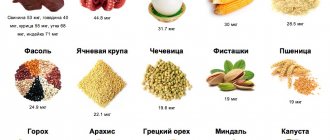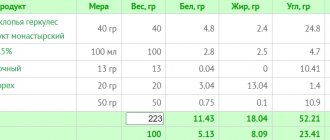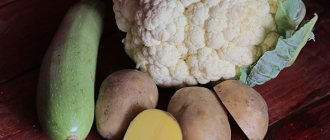A little about proteins
Proteins are high molecular weight organic substances. They consist of different amino acids, which are combined in different ways. There are more than 5 million different proteins in the human body.
A person cannot live without consuming protein, since this substance is involved in all vital processes. It contains 22 amino acids. About half of them the body cannot produce on its own. He is also unable to do without them.
Main functions:
- regeneration of cells and tissues;
- they are an integral part of enzymes;
- normalization of hormonal levels;
- protecting the body from infections and external irritants;
- providing access to blood cells of oxygen, vitamins, etc.
Foods rich in protein and fiber are foods of animal and plant origin. Proteins are found in meat, fish, eggs, milk, cheese, cereals, etc. Fiber is found in vegetables, fruits and herbs. This substance is not absorbed by the body and, when consumed in large quantities, leads to intestinal problems.
Types of proteins
There are 2 types of protein products:
- Animals. They are quickly absorbed, but during a diet they should be consumed in moderation due to their high fat content. During fasting days, you can eat lean meat: chicken, turkey, rabbit. It is better to avoid pork and lamb. Dairy products are allowed, but only low-fat.
- Vegetable. They are absorbed much more slowly. But they are optimal for any diet, because they are low in calories.
They should be consumed in a balanced manner, since an excess or deficiency of these substances in the body can negatively affect health.
Signs of protein deficiency
A lack of protein in the body manifests itself as follows:
- An irresistible desire to eat a certain product
It happens that you have a strong craving for sweet, salty or sour foods and it’s impossible to cope with it. Not always, but in frequent cases it is closely related to a lack of proteins.
- Sharp pain in muscles or joints
If your neck or knee suddenly hurts for no apparent reason and in the absence of diseases, you need to check whether there is enough protein in your diet. The body stores a little protein in reserve, which is closely related to the functioning of muscles and joints. With its constant shortage, this reserve is spent, which means health problems arise.
- Problems with sleep and fatigue
The body replaces the lack of proteins with an additional portion of carbohydrates and sugar, but they are quickly processed, energy is thrown away, and after a while it is not enough. If you have insomnia, you can try to reduce the amount of sweets and focus on protein.
- Moodiness, irritability, bad mood and constant stress
After a certain period of a protein-free regime, the body is completely exhausted, and even carbohydrate energy surges cannot save it. This leads to general malaise and irritability.
Why is protein so important?
The amino acids that make up the substance are necessary for:
- cell restoration;
- building muscle tissue;
- maintaining hair, nails and skin in a healthy condition.
Protein nutrition is especially important for:
- children, since their bodies are constantly growing;
- pregnant women, because with a lack of protein nutrition, fetal development slows down;
- athletes and people who go to the gym, since such a diet promotes the growth of muscle mass.
You need to consume 2 g of protein per 1 kg of body weight per day. These products should make up 40% of the total food. The main supplier is food of animal origin.
Pros of protein nutrition
A protein-rich diet is popular due to its effectiveness. Protein, even if it comes in excess, is not converted into fat, but is excreted from the body. Therefore, such products form the basis of the diet, and carbohydrates and fats are kept to a minimum.
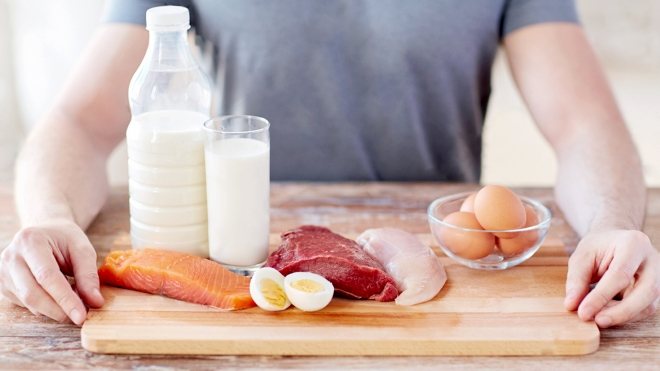
The advantages of this diet include:
- Weight loss. The body takes energy by breaking down fats accumulated in the body.
- No feeling of hunger, because protein foods are filling.
- Improved appearance: healthy hair and nails.
- Positive effect on muscle tissue.
Despite all the usefulness of protein products, the diet should not consist entirely of them.
Role in weight loss
Weight loss is ensured by a number of factors:
- balanced diet,
- physical activity,
- changing eating habits.
At the same time, it is important, while reconsidering your view of food, to preserve its nutritional value, to support the body with a complex of nutrients, the most important of which will be protein. A sufficient amount of it in the diet while reducing total calories will protect against deterioration of the skin, muscles, bone tissue, and decreased immunity
According to fitness trainer and nutritionist Nika Tyutyunnikova, protein in foods when losing weight is also important for other reasons.
Well satiates
Protein products satisfy hunger and prolong the feeling of fullness, and they need less volume than, for example, carbohydrates. This is due to the ability to suppress the production of ghrelin, the hunger hormone. And stimulate the “production” of the satiety hormone - peptide YY.
This feature is evidenced by the results of a study in which overweight women took part. In their diet, the amount of protein was increased from 15 to 30 percent, while the participants in the experiment were not limited in food. As a result, the total calorie intake decreased by 441 Kcal, which ensured gradual weight loss.
In this case, we are talking about physiological food consumption, that is, eating until you feel full. It is the opposite of a painful desire for food, when a person strives for snacks without accompanying hunger. Such conditions are no different from cravings for smoking or alcohol; they are dangerous for the body due to excess calorie consumption and obesity.
It has been found that increasing protein in the diet of people with uncontrollable food cravings reduces the need for snacking. This is evidenced by the results of a study conducted among overweight men. Increasing the amount of protein foods by 25 percent reduced the desire to snack during the day by 60 percent and at night by 50 percent.
According to scientists, this effect of protein is due to its effect on the production of dopamine, a chemical substance that has been scientifically dubbed the “pleasure molecule.” It is the production of dopamine in the brain that gives a person a feeling of comfort and positive emotions. It also contributes to the formation of addictions - a person strives for something that makes him feel good. In this case, to protein foods, which satiate better and are of “higher quality” than fast carbohydrates.
Builds muscle tissue
In fact, muscle is a protein formation; with a low content of the substance in the diet, loss of muscle tissue is inevitable
This is important to take into account not only for athletes seeking to increase muscle mass, but also for those who monitor their weight and try to keep themselves in “shape”. When losing weight, there is a high risk of losing not only hated fat reserves, but also muscles
To prevent this from happening, it is important to eat foods with the highest protein content.
Increases metabolic rate and accelerates fat burning
Proteins are complex substances consisting of chains of amino acids. Their absorption requires energy expenditure from the body, unlike simple carbohydrates (sugars), which are quickly transformed into fat. Protein compounds are not converted into fat, even if the body receives them in excess: the excess energy received is burned during digestion.
Eating high in protein can burn 260 more calories per day than eating low in protein. An hour-long intense workout burns the same amount of calories.
Increases bone density
The “alkaline” diet is based on the belief that proteins lower blood pH levels and lead to brittle bones. Its main principle is to reduce the consumption of protein products of animal origin, which cause “aging” of the body. By the way, this diet has not received scientific confirmation, nor has the fact of changes in the acid-base balance of the blood, which is constant. On the contrary, research shows that sufficient consumption of protein foods of animal origin promotes the retention of calcium in the bones and, accordingly, increases their density.
It is especially important to consume enough protein for older people whose bone tissue is subject to changes. Women suffer from brittle bones during and after menopause, often prone to excess weight
Protein-rich foods are essential for these populations.
Beneficial properties of protein and its effect on the body
Functions of amino acids:
- Transport. Delivery of fats, vitamins and microelements to cells is ensured.
- Catalytic. Some of the amino acids are essential elements, without which biochemical reactions in the body cannot take place.
- Protective. Some types of proteins are antibodies that support immunity.
- Construction Amino acids serve as material for creating new cells and restoring existing ones.
In order for the body to absorb protein, the food consumed along with it must contain vitamin C.
Proteins play an important role for the human body, but they act in combination with fats, carbohydrates and vitamins. Thanks to peptides, these substances can even be converted into each other. Therefore, the main thing in nutrition is balance.
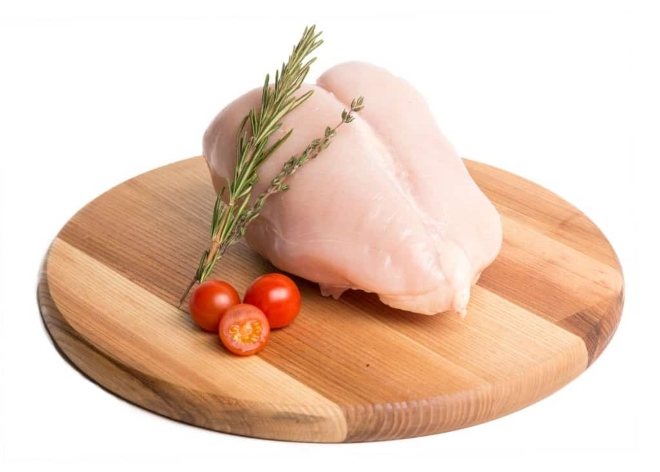
Dangerous properties of proteins and warnings
Food with proteins should not exceed half of the total amount of food consumed.
The Dangers of Excessive Protein Consumption
Even healthy food can be harmful to health if its quantity exceeds permissible limits. Rules for eating protein products:
- You need to eat often, but in small portions. To process large amounts of protein, you need a lot of calcium. The body will begin to remove it from the bones, which can lead to problems with the musculoskeletal system.
- People with kidney disease should adhere to the daily intake of protein foods prescribed by their doctor.
- Animal products contain cholesterol and harmful microelements. Therefore, preference should be given to plant foods.
Protein foods are beneficial if you follow these tips.
What is the difference between animal and plant protein
A healthy protein is one that provides all the amino acids. Eggs are considered the standard because they are the most similar to the components found in the human body.
Most proteins from animal products (meat, milk) are useful components.
It's important to note that animal protein comes with a higher intake of saturated fatty acids, which should be limited due to the risk of cardiovascular disease.
When you enrich your menu with plant proteins, you also get more healthy dietary fiber, natural antioxidants, vitamins and minerals.
Animal protein is great for people involved in intense sports, it allows you to build muscles, as well as their regeneration after training.

In plant foods, most proteins are defective (with the exception of soy). When one or more amino acids are missing, the body cannot fully utilize this source of supply.
This amino acid is expertly referred to as organic. In legume seeds, the organic amino acid is methionine, and in grain products it is lysine.
You can combine whole grain cereals and legumes with one meal to create a meal that provides a healthy meal.
Daily protein intake
The consumption rate depends on several factors:
- body type;
- physical activity;
- food quality;
- exercise stress.
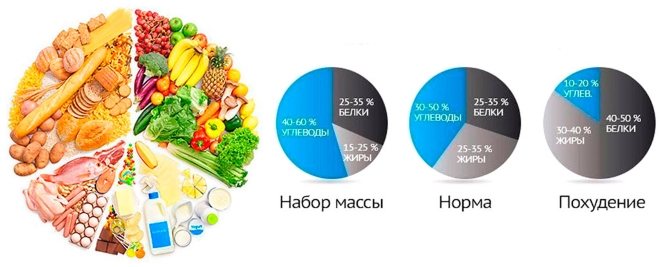
The average daily intake is 80-90 g for an adult. It depends on gender, age and physical activity, so the indicators in each case are calculated individually:
- Women. The norm is 60-90 g per day. For pregnant women, the rate increases 1.5 times. A deficiency of protein products can lead to intrauterine abnormalities.
- Men – 80-120 g. With constant physical activity, the norm increases to 150 g.
- Children. Preschool age - 3 g per 1 kg of weight, schoolchildren - 2.5 g per 1 kg. Protein deficiency can lead to dystrophy.
Protein distribution during the day
The minimum amount of these substances per day is 60 g. At the same time, the body is still able to function normally. But with increased physical activity, this amount will not be enough.
There are 2 options for daily consumption of such products. In 1 case, each meal contains the same amount of substances. With option 2:
- breakfast: 20%;
- snack: 5%;
- lunch: 45%;
- afternoon snack: 5%;
- dinner: 20%;
- snack: 5%.
The purpose of such nutrition is to prevent feelings of hunger, as this is harmful to the pancreas.
What exactly is
For breakfast, for example, low-fat cottage cheese (100 g) with berries or fruits (50-100 g) or an omelette of two eggs with vegetables. For lunch - chicken breast with stewed vegetables and cereals (a small portion of brown rice, quinoa, buckwheat, pearl barley, bulgur, etc.). For dinner, cook lean fish with vegetable salad. In between meals, you can snack on any fermented milk product (natural yogurt, kefir, fermented baked milk, low-fat cottage cheese) or unsweetened fruit. Limit salt and remember to drink at least 1.5-2 liters of liquid per day. The best thing is water or herbal tea.
Another important condition for a protein diet is additional aerobic exercise. To maintain muscles while losing weight, they should be loaded with exercises
Physical exercise will help you use energy to burn fat and prevent your metabolism from slowing down. Try to exercise at least 3 times a week.
List of Protein Rich Foods
To correctly calculate the daily requirement, you need to know the amount of protein in each product. In addition, for optimal absorption, foods must be combined with each other. The best protein foods: meat, milk, eggs, cereals and nuts.
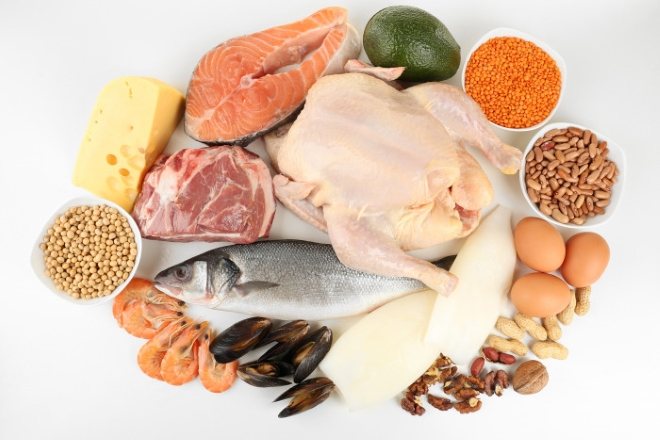
10 foods with the highest protein content
The top protein products with daily intake are presented in the table:
| Product type | Protein content (per 100 g) |
| Poultry meat | 17-22 |
| Pork, beef | 15-20 |
| Fish | 14-20 |
| Seafood | 15-18 |
| Legumes | 20-25 |
| Nuts | 15-30 |
| Eggs | 12 |
| Hard cheese | 25-27 |
| Cottage cheese | 14-18 |
| Cereals | 8-12 |
The protein content in food products is presented as an absolute value. But we must remember that these substances are not fully absorbed by the body.
Meat proteins
| Types of meat | Content g/100 g |
| Turkey | 21-22 |
| Chicken | 20-21 |
| Beef | 19 |
| Mutton | 16 |
| Pork | 11-16 |
Meat from rabbits, poultry and cattle is a protein-rich product. It is useful in any form, except fried. Pork should be eaten in moderation, as it contains fats. Before eating, you can cut off the fat, then the meat will be more dietary.
Beef contains slightly more protein than pork. The internal organs of animals (liver, tongue, etc.) are rich in microelements, so they should be included in the diet.
Fish and seafood proteins
| Fish and seafood | Content g/100 g |
| Pink salmon | 21 |
| Salmon | 20,8 |
| Squid, shrimp, mackerel | 18 |
| Herring | 17-18 |
| Crab, flounder, pollock | 16 |
| capelin | 13 |
Fish rich in protein: salmon, tuna, flounder, herring, trout. The most amino acids are found in caviar. In inexpensive varieties of fish, for example, capelin, caviar is not inferior in beneficial properties to sturgeon. In addition, seafood contains a lot of phosphorus.
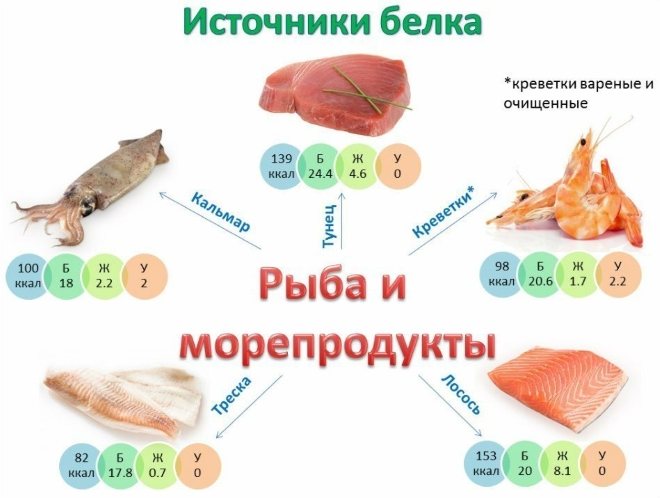
Milk proteins
| Dairy | Content g/100 g |
| Cheese | 20-27 |
| Cottage cheese | 14-18 |
| Yogurt | 5 |
| Cream, kefir, sour cream | 2,8-3 |
| Milk | 2,8 |
Dairy products with the highest protein content: milk, cheese, cottage cheese and kefir. They contain calcium, which is necessary for the absorption of amino acids. Fermented milk products have a positive effect on intestinal microflora. In low-fat form, such food is indispensable for the diet.
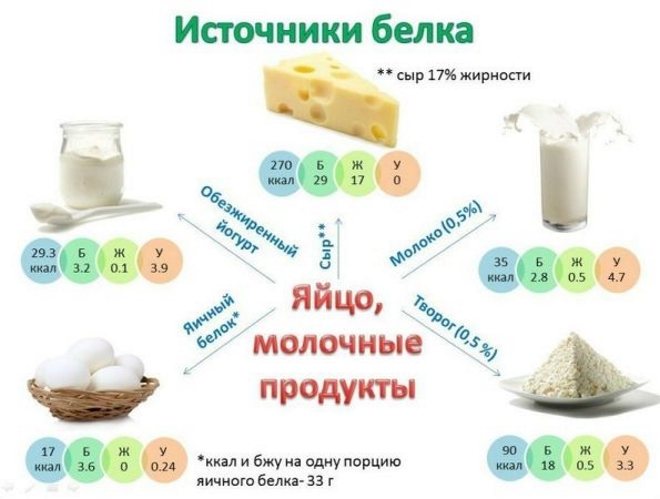
Cereals
| Cereals | Content g/100 g |
| Hercules | 13 |
| Millet | 11,5 |
| Oatmeal, semolina | 11 |
| Buckwheat | 10,8 |
| Pearl barley | 9,3 |
| Rice | 7 |
Of the cereals, buckwheat is the most useful in this sense. These products are useful because they are almost 50% absorbed by the body. There is a lot of protein in oatmeal and pearl barley, and rice is 3 times inferior to buckwheat in terms of beneficial properties.
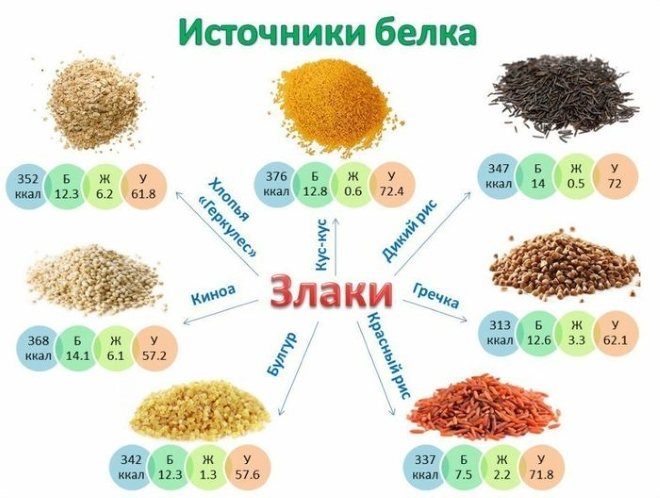
Cheap Products for Gaining Muscle Mass
To ensure that everyone can afford a good figure, you can create a diet of cheap products for gaining muscle mass. For example, like this:
- pollock fish is a source of the cheapest proteins and essential fats;
- fish fat;
- chicken fillet;
- skim cheese;
- rice, oatmeal, millet, buckwheat (one at a time, for variety) as a side dish;
- mashed potatoes);
- egg powder (many times more protein than in the fermented milk group);
- eggs;
- mushrooms;
- beans;
- affordable vegetables, herbs, fruits, nuts;
- dried fruits;
- water.
In a budget diet, you should focus on quality, giving preference not so much to taste and smell as to healthiness. Although it is quite possible to combine both.
There are special tables for calculating calories. Over time, it is possible to determine how much of something there is “by eye.” Low-calorie vegetables don't count.
It is useful to prepare steamed, stewed, boiled dishes. Vegetables, herbs, and fruits are eaten raw.
Protein Digestibility
Protein-rich foods are not fully digested and absorbed by the body.
Protein Digestibility Chart
| Product type | Digestibility, % |
| Eggs | 88 |
| Dairy | 80 |
| Fish and meat | 70-80 |
| Rice | 40 |
| Buckwheat | 38 |
| Wheat | 35 |
| Peanut | 34 |
| Soybeans | 48 |
| Peas | 39 |
Milk has a low %, because the enzyme involved in its processing is not produced in all people. The amount of this enzyme decreases with each passing year. Therefore, instead of milk, it is better to consume fermented milk products. Amino acids of animal origin are absorbed better than plant ones.

Sample daily menu
A diet based on protein products is valuable because the body begins to consume fats accumulated by the body. Diet principles:
- More than half of the diet should be protein-rich foods.
- Nutrition should be balanced. It is necessary to include vegetables and fruits in the menu.
- Fats and carbohydrates are eliminated almost completely.
- In addition to proper nutrition, you need to do physical activity. For your gym sessions to be beneficial, you need to drink a protein shake half an hour before.
- Meal frequency: 5-6 times a day at intervals of 2-3 hours.

3-day diet menu:
- Breakfast: 1 egg (not fried).
- Lunch, dinner: 150-200 g low-fat cottage cheese, tea without sugar.
The interval between meals is 3 hours. Snacks are not allowed. You can drink water and unsweetened herbal teas. Any physical activity is prohibited.
This diet plan is not balanced, so you can go on a diet for no longer than 3 days. You can lose weight using this technology no more than once every six months.
How to increase the absorption of a substance
Nutritionists and sports nutrition specialists make the following recommendations:
- Protein-containing foods are best prepared for breakfast and lunch. The morning should account for approximately 25% of the daily requirement, and the afternoon – 45%. The remaining amount can be distributed in approximately equal portions for snacks and dinner.
- Protein is quite difficult to digest, and in the afternoon it is better not to overload the digestive system so as not to disturb night sleep. If such a scheme is inconvenient for some reason, you should divide the daily amount into approximately equal portions, which are distributed over 5-6 meals;
- The best partners for protein are high-fiber foods. Although fiber itself does not have a significant effect on protein absorption, it effectively copes with the waste products of protein metabolism and its excess. By improving intestinal function and absorbing various compounds, fiber helps prevent so-called protein intoxication;
- For better protein absorption, it is important to include in your diet foods rich in vitamin C and B vitamins, which, among other things, normalize protein metabolism.
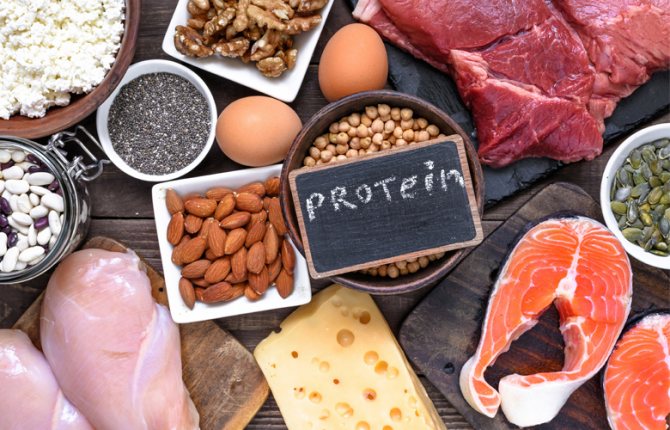
How to compensate for the lack of protein for vegetarians
Vegetarianism is considered a correct nutritional system if it is balanced, that is, protein foods are present in the diet. The absence of meat in the menu can be compensated for with vegetable protein:
- Dairy products. They are beneficial due to the optimal balance of amino acids. Whey has good digestibility. 500 ml of milk contains 1/3 of the daily protein requirement.
- Eggs. They are well absorbed and contain a complex of vitamins, micro- and macroelements.
- Cereals. They contain a lot of carbohydrates and minerals.
Among the plant sources of amino acids, corn stands out, which also contains fatty oils, mineral salts and selenium. This product is useful even in canned form. Corn is a preventative against atherosclerosis. Potatoes are also appreciated by vegetarians.

Food will be healthy only if the products are correctly combined. Some can be combined, while others are better consumed separately. For example, dairy products go with everything except eggs. The latter are best not consumed with corn, nuts and bread. Eggs can be eaten along with potatoes and legumes.
High-calorie foods
In order to gain weight, you need to eat high-calorie foods. But this does not mean that you can eat everything.
A balanced diet should include:
- Dairy products with medium and high fat content, that is, from 3.2%. Not all people tolerate whole milk well, but cottage cheese, yogurt, and kefir must be present in the diet. You can eat mild cheeses, including soft ones with a higher fat content.
- Complex carbohydrates - whole grain porridge cooked in milk; Buckwheat, rice, semolina, etc. are suitable. This also includes muesli, including those containing nuts and raisins.
- Fatty meats: pork, beef, if there are no contraindications to their consumption.
- Durum wheat pasta.
- Starchy vegetables, primarily potatoes.
- High-calorie fruits: grapes, bananas, melons, peaches.
- Honey, preserves and jams, fruit jellies and mousses. You can also eat chocolate, but in reasonable quantities.
A protein-carbohydrate bar is suitable as a dessert - such sweets are sold in sports nutrition stores.
What food should you choose?
Protein-rich foods can be used for weight loss, but you need to choose low-calorie foods. In addition, the diet should always contain fiber, as it prevents sugar from being stored in fat and normalizes intestinal function. You can’t eat protein foods alone, otherwise changes in metabolism will occur. Such a diet can lead to various kinds of disorders, for example, weakening of bones.
Protein-rich plant foods include fruits, vegetables, legumes, nuts, and grains.
Vegetables and legumes
Protein is found in large quantities in vegetables, especially if they are green (spinach, Brussels sprouts, broccoli, asparagus, etc.). This substance is also found in many legumes: peas, lentils, chickpeas, beans.
Benefits of including legumes in your diet:
- Satisfaction of products. A small portion of such food allows you to not feel hungry for a long time.
- Minimum fat content.
- They are rich in fiber and complex carbohydrates, which contribute to weight loss.
Benefits of eating vegetables:
- Even in large quantities they do not cause harm to health.
- No feeling of hunger. Low calorie content allows you to make large portions and at the same time lose weight.
- Low cost, especially in the summer season.
- Vegetables cleanse the body, increase immunity, and normalize digestive processes.
- The variety of products allows you to prepare new dishes every day.
- Lost weight after such a diet does not come back.
It will not be possible to eat in this mode all year round, because in winter vegetables lose most of their beneficial properties.
Fruits
Fruits that contain large amounts of protein include apricots, dates, avocados, bananas, and passion fruit. The nutrients contained in such foods are beneficial for healthy hair and skin.
Fruits can be consumed in the form of smoothies, salads and juices. It is advisable to eat them fresh to get the maximum amount of vitamins.
Mushrooms
The proportion of protein in mushrooms ranges from 2.5 to 3.5%. The exception is the porcini mushroom. The amount of amino acids in it is greater than in potatoes. In dried form, this mushroom surpasses even beef and fish in protein content.

In addition, mushrooms contain a lot of vitamins and mineral salts. They are low in calories if they are not fried, but you cannot eat such food all the time. Mushrooms are contraindicated for people with stomach problems. To avoid discomfort, you need to eat them in limited quantities.
Mushrooms contain chitin, a substance that slows down the digestion of food, making them difficult to digest. You should not eat overgrown mushrooms, as they can accumulate harmful substances. Mushroom caps contain more nutrients than stems. After drying, the caloric content of products increases.
Eggs are the ideal protein product
Eggs are an ideal product when considering them in terms of protein content. Most importantly, you should never eat eggs raw. Protein is easier to digest if the eggs are soft-boiled rather than hard-boiled, but keep in mind that high-calorie yolks will be included in the list of neutral foods.
It would also be great if you included fruits, which contain a lot of plant-based protein, in your diet.
Usually such fruits are quite hard. That is, you can buy pineapples and apples, pears, as well as many fruits that are classified as exotic - mango and kiwi, passion fruit and lychee.
A lot of protein is also found in fruits that have seeds. It is better to take grapes and plums, cherries, nectarines and peaches as a guide. Like everything else, it is advisable to eat fruits only fresh.
You can also drink fruit juices without fear for your figure or health - but just follow the main condition - there should be no sugar in the juices. And they must also be freshly prepared.
Protein-rich foods, the table of which is provided on our website, also include wines - white, red and rose.
